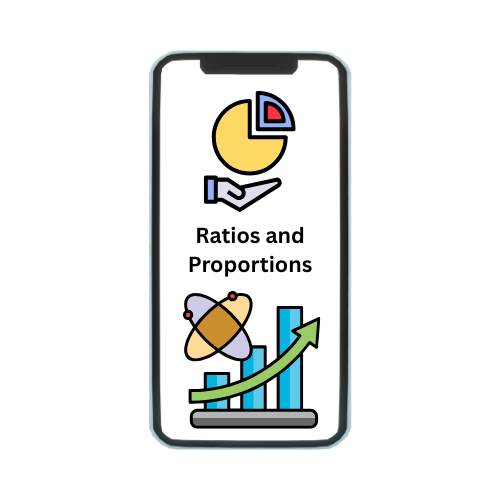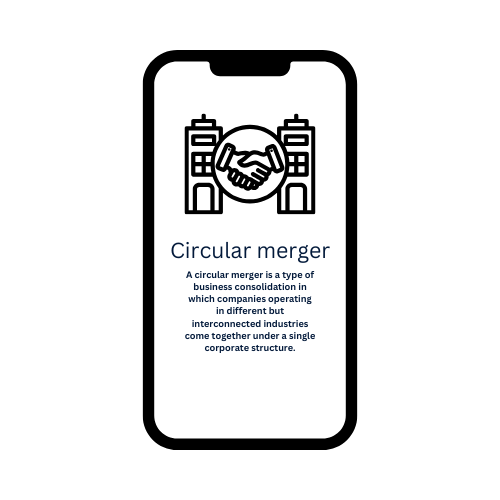International Financial Reporting Standards (IFRS) are a set of accounting rules and guidelines designed to bring consistency, transparency, and efficiency to financial statements across different countries. Developed and maintained by the International Accounting Standards Board (IASB), IFRS provides a standardized framework for the preparation and presentation of financial statements, ensuring that financial information is comparable across international boundaries. This uniformity helps investors, regulators, and other stakeholders make informed decisions based on reliable financial data. IFRS encompasses a broad range of standards that cover various aspects of accounting, from the recognition and measurement of assets and liabilities to the disclosure of financial performance and position. By adopting IFRS, companies can enhance their financial reporting practices, facilitate cross-border investments, and support the global financial market’s stability and growth.
What Are International Financial Reporting Standards (IFRS)?
Definition and Purpose
International Financial Reporting Standards (IFRS) are a set of globally recognized accounting principles developed to provide a consistent framework for financial reporting across different countries. Created and maintained by the International Accounting Standards Board (IASB), these standards are designed to ensure transparency, comparability, and accountability in financial statements, making it easier for investors, regulators, and other stakeholders to assess and compare financial information from companies worldwide.
Development and Oversight
IFRS were first introduced in 2001 by the IASB, which took over from the International Accounting Standards Committee (IASC). The IASB is responsible for issuing and updating IFRS standards, and it works to harmonize accounting practices globally. The development process involves extensive consultation with various stakeholders, including accountants, regulators, and financial statement users, to address emerging financial issues and improve reporting practices.
Key Components Of Financial Statements Under IFRS
Financial statements prepared under International Financial Reporting Standards (IFRS) consist of several key components that provide a comprehensive view of a company’s financial performance and position. Each component serves a specific purpose and offers valuable insights for investors, regulators, and other stakeholders. Here’s a detailed look at these key components:
- Statement of Financial Position (Balance Sheet)
The Statement of Financial Position, commonly known as the balance sheet, presents a company’s assets, liabilities, and equity at a specific point in time. This component helps users understand the company’s financial health by showing what the company owns (assets), what it owes (liabilities), and the residual interest of the owners (equity). The balance sheet adheres to the fundamental accounting equation: Assets = Liabilities + Equity.
- Statement of Profit or Loss and Other Comprehensive Income
This statement, also referred to as the income statement, details a company’s revenues, expenses, gains, and losses over a specific period. It shows how much profit or loss the company generated and includes a section for Other Comprehensive Income, which captures items not included in the profit or loss but affecting equity, such as unrealized gains or losses on certain investments or foreign currency translations.
- Statement of Changes in Equity
The Statement of Changes in Equity provides a detailed breakdown of changes in equity from the beginning to the end of the reporting period. It includes information on profit or loss for the period, other comprehensive income, dividends paid, and any other changes in equity such as share issuance or repurchases. This statement helps users track how the company’s equity has evolved over time.
- Statement of Cash Flows
The Statement of Cash Flows reports the cash inflows and outflows from operating, investing, and financing activities during the period. It provides insights into a company’s liquidity and cash management practices by showing how cash is generated and used. The cash flows are categorized into three sections:
- Operating Activities: Cash flows from the core business operations.
- Investing Activities: Cash flows from buying or selling assets, investments, and business acquisitions or disposals.
- Financing Activities: Cash flows related to obtaining or repaying capital, including debt and equity transactions.
- Notes to the Financial Statements
The Notes provide additional details and context to the figures presented in the financial statements. They include explanations of accounting policies, assumptions used in preparing the statements, and detailed information on specific financial statement items like assets, liabilities, and contingent liabilities. The notes are essential for understanding the nuances of the financial statements and ensuring transparency.
Benefits Of Adopting IFRS
Adopting International Financial Reporting Standards (IFRS) offers numerous advantages for companies, investors, and the global financial market. These benefits stem from the standardization and clarity that IFRS brings to financial reporting practices. Here’s a detailed look at the key benefits:
- Enhanced Comparability
Improved Global Comparisons: IFRS provides a common accounting language, which enables investors and analysts to compare financial statements across different countries and industries. This comparability helps stakeholders evaluate and benchmark companies on a level playing field, making it easier to make investment decisions and assess financial performance.
- Increased Transparency
Clearer Financial Reporting: IFRS enhances the transparency of financial statements by requiring detailed disclosures and consistent presentation of financial information. This transparency helps users of financial statements understand the company’s financial health, performance, and risks, leading to more informed investment and regulatory decisions.
- Facilitation of Cross-Border Investments
Access to Global Capital Markets: By adopting IFRS, companies can attract investors from around the world. A standardized reporting framework reduces the barriers for international investors and lenders, making it easier for companies to access global capital markets and secure funding.
- Consistency in Financial Reporting
Uniform Accounting Standards: IFRS ensures that companies follow consistent accounting principles and practices, reducing variations in financial reporting. This consistency benefits multinational corporations by streamlining financial reporting processes across different jurisdictions and minimizing the need for adjustments.
- Improved Financial Statement Quality
High Reporting Standards: IFRS emphasizes fair presentation and relevance of financial information, leading to high-quality financial statements. The rigorous standards help prevent manipulation of financial data and ensure that the financial statements reflect the true economic condition of the company.
List Of International Financial Reporting Standards
IFRS Standard | Title |
IFRS 1 | First-time Adoption of International Financial Reporting Standards |
IFRS 2 | Share-based Payment |
IFRS 3 | Business Combinations |
IFRS 4 | Insurance Contracts |
IFRS 5 | Non-current Assets Held for Sale and Discontinued Operations |
IFRS 6 | Exploration for and Evaluation of Mineral Resources |
IFRS 7 | Financial Instruments: Disclosures |
IFRS 8 | Operating Segments |
IFRS 9 | Financial Instruments |
IFRS 10 | Consolidated Financial Statements |
IFRS 11 | Joint Arrangements |
IFRS 12 | Disclosure of Interests in Other Entities |
IFRS 13 | Fair Value Measurement |
IFRS 14 | Regulatory Deferral Accounts |
IFRS 15 | Revenue from Contracts with Customers |
IFRS 16 | Leases |
IFRS 17 | Insurance Contracts |
IFRS 18 | Revenue (now superseded by IFRS 15) |
IFRS 19 | Employee Benefits (now incorporated into IAS 19) |
IFRS Vs. GAAP
When comparing International Financial Reporting Standards (IFRS) with Generally Accepted Accounting Principles (GAAP), it’s essential to understand the key differences between these two major accounting frameworks. Both IFRS and GAAP provide guidelines for financial reporting, but they differ in their approaches, applications, and objectives. Here’s a detailed comparison highlighting the main distinctions:
- Framework and Principles
IFRS: Principles-Based Framework
IFRS follows a principles-based approach, focusing on the broad concepts and objectives of financial reporting rather than specific rules. This framework allows for flexibility in interpreting standards and applying judgment to reflect the economic substance of transactions.
GAAP: Rules-Based Framework
In contrast, GAAP adopts a rules-based approach with detailed and specific rules for various accounting scenarios. This framework provides clear guidelines but can lead to rigid interpretations and a focus on compliance rather than the underlying principles of financial reporting.
- Conceptual Framework
IFRS: Conceptual Framework for Financial Reporting
IFRS is guided by a conceptual framework that defines the objectives and principles of financial reporting, such as the importance of relevance, reliability, comparability, and consistency. This framework emphasizes the substance over form in financial reporting.
GAAP: Conceptual Framework
GAAP also has a conceptual framework but tends to be more prescriptive. The U.S. GAAP framework provides detailed rules and guidance, which can sometimes lead to a checklist approach rather than focusing on the overarching principles of financial reporting.
- Revenue Recognition
IFRS: Revenue Recognition Standard (IFRS 15)
IFRS 15 establishes a single, comprehensive revenue recognition model based on the transfer of control. It provides a five-step process for recognizing revenue, focusing on the transfer of control from the seller to the buyer.
GAAP: Revenue Recognition Standards
U.S. GAAP uses several standards for revenue recognition, such as ASC 606, which is similar to IFRS 15 but with more industry-specific guidance. Although ASC 606 aligns closely with IFRS 15, there are differences in the interpretation and application of revenue recognition principles.
- Leases Accounting
IFRS: Lease Accounting Standard (IFRS 16)
IFRS 16 requires lessees to recognize most leases on the balance sheet as assets and liabilities, reflecting the right to use an asset and the obligation to make lease payments. This approach provides a more transparent view of lease commitments.
GAAP: Lease Accounting (ASC 842)
Under U.S. GAAP, ASC 842 requires lessees to recognize lease assets and liabilities on the balance sheet but offers more flexibility in classifying leases as either operating or finance leases. This distinction affects the expense recognition pattern for leases.
- Inventory Valuation
IFRS: Inventory Valuation
IFRS does not permit the use of the Last-In, First-Out (LIFO) method for inventory valuation. Instead, it requires the use of methods like First-In, First-Out (FIFO) and weighted average cost, which can affect the reported cost of goods sold and inventory values.
GAAP: Inventory Valuation
U.S. GAAP allows the use of LIFO as well as FIFO and weighted average cost for inventory valuation. The choice of inventory method under GAAP can impact the reported profits, especially in inflationary environments.
Conclusion
In conclusion, the comparison between International Financial Reporting Standards (IFRS) and Generally Accepted Accounting Principles (GAAP) highlights fundamental differences in accounting frameworks that affect global financial reporting practices. IFRS, with its principles-based approach, emphasizes a high-level conceptual framework that promotes transparency, comparability, and flexibility across international borders. It aims to provide a broad set of guidelines that reflect the economic substance of transactions and support global capital flows. In contrast, U.S. GAAP, characterized by its rules-based structure, offers detailed and specific regulations designed to address a wide range of accounting scenarios with a focus on compliance and detailed reporting. While IFRS fosters a more flexible and global perspective, U.S. GAAP provides a more prescriptive and detailed approach to financial reporting. These differences can influence everything from how companies recognize revenue and account for leases to how they measure assets and report financial performance. Understanding these distinctions is crucial for investors, companies, and financial professionals who navigate international markets, as it affects financial analysis, investment decisions, and regulatory compliance. As the global financial landscape continues to evolve, the harmonization of IFRS and U.S. GAAP remains a significant goal for achieving a unified international accounting framework, which could potentially lead to more standardized and effective financial reporting practices worldwide.








